What Should Be Inside A Chicken Coop
- January 30, 2024
- 0 comment
With years of experience in raising chickens under my belt, I’ve gained a deep understanding of just how crucial it is to have a chicken coop that’s not only functional but also fully equipped to meet all the needs of your feathered friends. In this article, I’m eager and excited to impart my knowledge and guide you through the intricacies of what makes a chicken coop truly effective and conducive to the well-being of your chickens.
This review is designed to be an essential tool for you, regardless of whether you’re just starting on your chicken-keeping journey or you’re already adept in the field. By the end of this, you’ll have a clearer understanding of the key components that contribute to a successful and flourishing chicken coop.
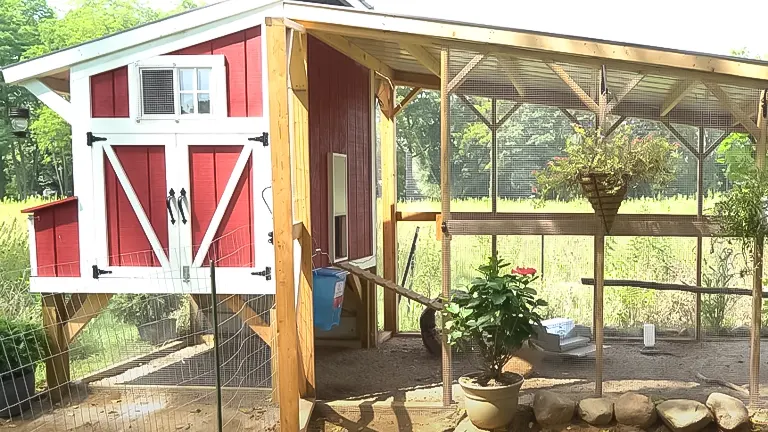
List of What Should Be Inside A Chicken Coop List:
- Comfortable Nesting Boxes
- Adequate Roosting Bars
- Proper Ventilation
- Secure, Predator-Proof Design
- Easy to Clean Features
- Feeding and Watering Stations
- Space for Dust Baths
- Adequate Space
- Enrichment
Exploring the Essentials of a Chicken Coop
A chicken coop is fundamentally a residence tailored for your cherished chickens. This specialized structure is meticulously crafted to offer a sanctuary and safeguard for your poultry. It functions as a multipurpose haven where chickens, along with their fellow flock members, can roost, lay eggs, and shield themselves from the threats of predators and the severity of diverse weather conditions.
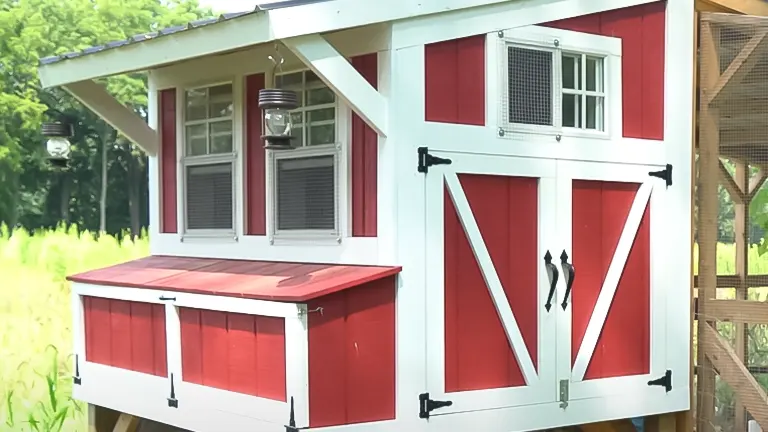
The versatility of chicken coops is evident in their varied sizes and architectural designs. They can range from compact coops, perfect for a small group of hens in a backyard setting, to expansive, custom-built structures designed to accommodate a larger flock for those who are more ambitious in their poultry-keeping endeavors.
In their construction, chicken coops are composed of a sturdy enclosure, utilizing materials such as wood, wire mesh, or metal. This combination ensures a balance of essential ventilation and robust protection against external elements and potential threats.

Venturing inside the coop, one discovers a host of integral features that address the fundamental needs of the chickens. These include nesting boxes, where hens can lay their eggs in comfort; roosting bars, providing a natural and safe spot for nightly perches; and essential elements like feeders and waterers, which are crucial for the daily sustenance and hydration of the flock.
The thoughtful design of a chicken coop is more than just a structural consideration; it plays a pivotal role in promoting the health, safety, and overall productivity of your flock. A well-planned chicken coop becomes a cornerstone in ensuring that your feathered companions thrive in a secure, comfortable, and healthy environment.
1. Comfortable Nesting Boxes
Comfortable nesting boxes are an integral feature in any chicken coop, serving as a private and serene space for hens to lay their eggs. Ideally, maintaining a ratio of one nesting box for every three to four hens ensures that each hen has ample opportunity to use these spaces without feeling overcrowded. The importance of these boxes extends beyond just being a laying area; they play a critical role in the psychological well-being of the hens.
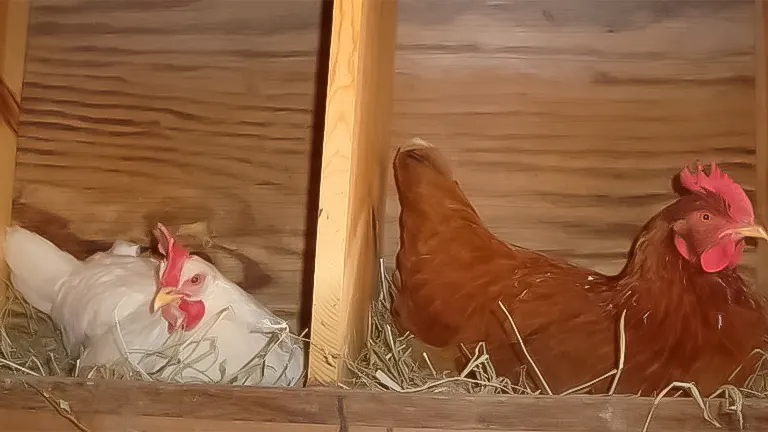
Lining these boxes with soft materials like straw or wood shavings is not just about keeping the eggs clean and undamaged; it also provides a significant comfort factor for the hens. This bedding helps to replicate the natural environments hens seek out in the wild for laying, offering a sense of security and comfort, which is crucial for their stress levels and overall health. Furthermore, comfortable and accessible nesting boxes encourage hens to lay their eggs in designated areas, making egg collection easier and ensuring the eggs are kept in a clean, safe environment.
2. Adequate Roosting Bars
Chickens have an instinctual need to roost on elevated surfaces at night as a natural defense against ground-based predators. In designing my coop, I prioritized robust roosting bars, ensuring they were positioned higher than the nesting boxes.
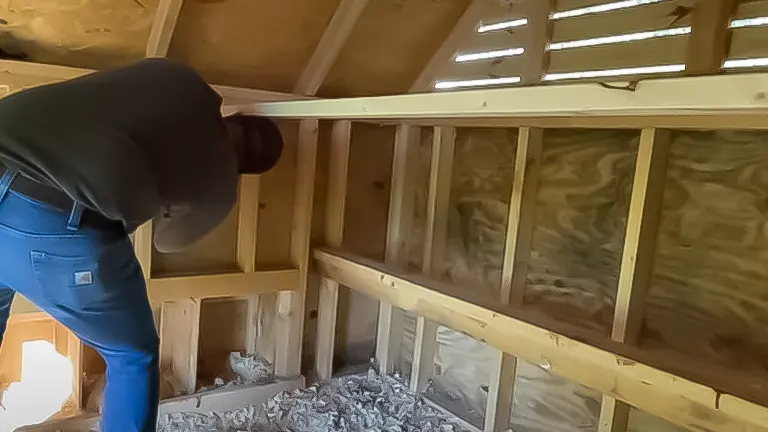
This strategic placement serves a dual purpose: it not only mimics the chickens’ natural roosting habits on branches but also discourages them from sleeping in the nesting boxes, a habit that can lead to soiled and damaged eggs.
The spacing between the bars was carefully calculated to provide sufficient room for each bird, thus preventing pecking disputes and overcrowding, which are common issues in cramped conditions. This careful planning ensures that each chicken can roost comfortably and safely, reflecting their natural behaviors and promoting a stress-free environment.
3. Proper Ventilation
In my chicken coop, ensuring proper ventilation was a key focus to maintain a healthy environment for the chickens. Good ventilation is crucial for regulating the internal temperature and humidity levels, factors that are essential for the birds’ respiratory health.

To achieve this, I installed vents near the top of the coop, strategically placing them to provide maximum airflow while preventing direct drafts on the roosting chickens. This design choice helps in circulating fresh air, reducing the buildup of harmful ammonia fumes and moisture, and maintaining an environment that is conducive to the chickens’ well-being.
4. Secure, Predator-Proof Design
Recognizing the constant threat posed by predators, I emphasized the security of the coop in its design. This meant ensuring that every potential entry point was reinforced to keep predators at bay.
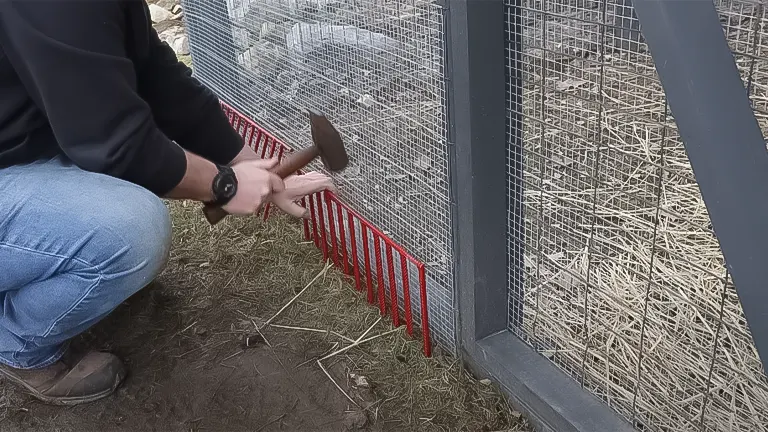
I opted for hardware cloth over the more traditional chicken wire, as the former offers superior strength and durability, effectively deterring even the most determined predators.
Additionally, the coop’s foundations were fortified to prevent animals from digging their way in, ensuring a safe and secure haven for the chickens.
5. Easy to Clean Features
Maintaining a clean environment is vital for the health of the chickens, which is why I incorporated easy-to-clean features into the coop’s design. This included using materials that are simple to wash and disinfect, as well as implementing a layout that facilitates efficient cleaning.
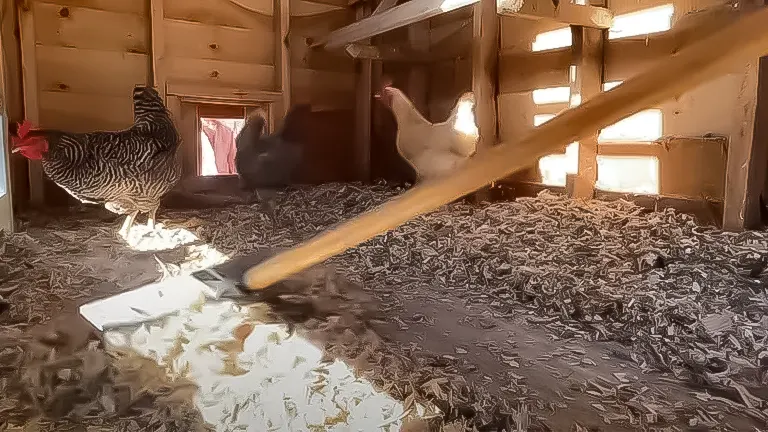
Key to this design was the inclusion of removable trays under the roosting bars, allowing for easy collection and disposal of droppings. The coop’s spacious interior also enables easy access for cleaning and maintenance, making the process less time-consuming and more effective.
6. Feeding and Watering Stations
Strategic placement of feeding and watering stations within the coop plays a significant role in maintaining cleanliness and hygiene.
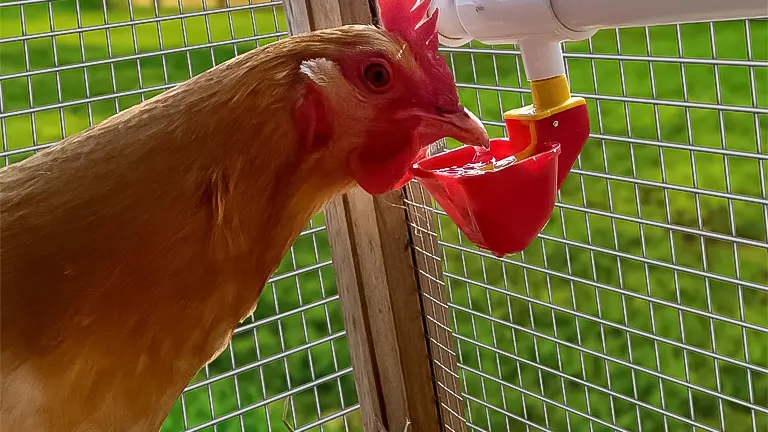
By positioning these stations at the height of the chickens’ backs, I minimized the risk of contamination from dirt and droppings, ensuring the birds have constant access to clean food and water.
Additionally, the design of these stations allows for easy refilling and cleaning, further promoting a hygienic environment for the chickens.
7. Space for Dust Baths
Acknowledging dust bathing as an essential and natural behavior for chickens, I dedicated an area within the coop for this purpose.
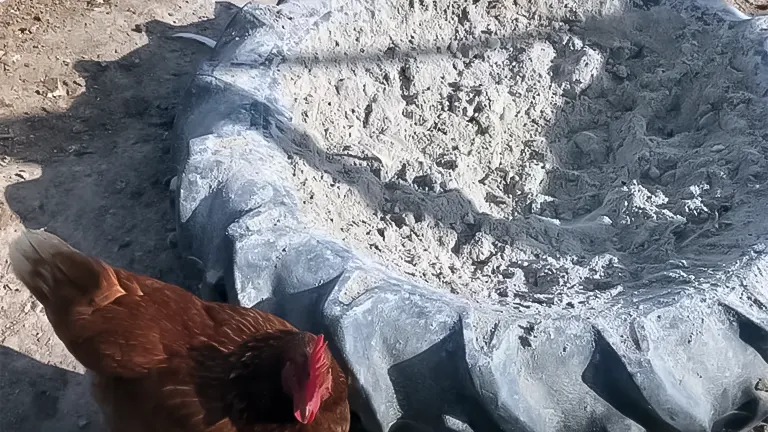
This space, filled with a mixture of sand and diatomaceous earth, provides the chickens with the necessary materials to engage in dust bathing, which is crucial for parasite control and maintaining their plumage.
This inclusion not only caters to their health needs but also offers an activity that is instinctual and enjoyable for them.
8. Adequate Space
To prevent the negative effects of overcrowding, such as stress, pecking, and health issues, I adhered to the guideline of providing a minimum of 3-4 square feet of space per chicken within the coop.
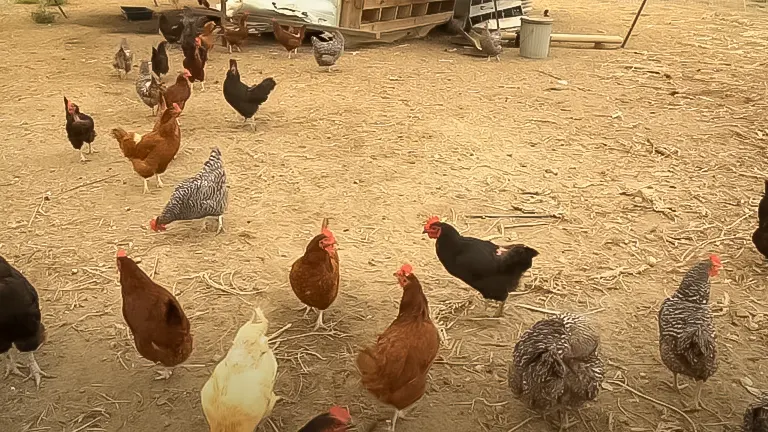
This ensures that each bird has enough room to move, feed, and rest without competition or discomfort. The spacious design is especially important for those considering expanding their flock, as it provides the flexibility to accommodate more birds without compromising their comfort or health.
9. Enrichment
Chickens are inquisitive and active animals, requiring mental and physical stimulation. To cater to this need, I incorporated various enrichment elements such as perches and ladders in the coop.

These features encourage natural behaviors like climbing and perching, keeping the chickens engaged and active.
Additionally, providing hanging treats, such as cabbages or specially designed chicken toys, offers them entertainment and prevents boredom, contributing to their overall well-being and happiness.
Grasping Essential Chicken Coop Structures for Peak Flock Well-Being
When discussing the essentials for a thriving chicken coop, it’s crucial to consider not just the interior elements but also the structural design of the coop itself. This design plays a pivotal role in addressing the health and well-being of your flock. Let’s delve into some of the most critical aspects of chicken coop architecture:
Size and Space Requirements:
Ensuring ample space for your chickens is fundamental to their health and happiness. The general guideline suggests providing 2-3 square feet of floor space per chicken within the coop. This allocation is critical to allow enough room for each bird to move freely, stretch their wings, and exhibit natural behaviors without feeling cramped.
In addition to indoor space, outdoor space is equally significant. A secure outdoor run should offer 4-5 square feet per chicken. This outdoor area is vital for their physical activity and well-being, allowing them to forage, bathe in dust, and enjoy the fresh air.
Ventilation: The Breath of Fresh Air:
Effective ventilation is a key feature of a healthy chicken coop. It’s not just about letting in air but ensuring a flow of fresh, oxygen-rich air that doesn’t create drafts. This air circulation is critical for several reasons:
- It supplies fresh, oxygen-rich air vital for the chickens’ respiratory health.
- It removes excess moisture, which is important in preventing the buildup of harmful ammonia fumes and reducing dampness that can lead to health issues.
- It effectively clears dust particles and dander from the air, which can cause respiratory problems if left to accumulate.
- It plays a significant role in reducing airborne pathogens and disease-causing organisms, thus maintaining a healthier environment.
- It prevents respiratory issues by maintaining air quality.
- During hot summer months, good airflow helps keep the coop cool and comfortable for the chickens.
A well-ventilated coop will have adjustable windows, vents, or openings that can be modified based on the weather conditions. This flexibility allows for increased airflow during hot weather and reduced drafts during colder months. Remember, if you enter the coop and detect a strong ammonia smell or feel excessive humidity, it’s a clear indicator that the coop requires improved vent
Related Articles:
- Best Bedding For Chickens
- Best Safe Chicken Coop Heater
- 8×8 Chicken Coop Plans
- Turning a Shed Into a Chicken Coop
- How to Make a Chicken Coop Out of Pallets
- Best Sand for Chicken Coop
- How To Insulate a Chicken Coop
- How To Heat a Chicken Coop
- How To Keep Water from Freezing in Chicken Coop
- How to Build a Chicken Coop
- How To Build Chicken Nesting Boxes
Final Closing Reflections
The journey to crafting an ideal chicken coop is a harmonious mix of functional design and a deep appreciation for the innate habits and requirements of your chickens. The design and features of a coop should be tailored to your specific situation, including the environment and the number of chickens you plan to house. The key elements I’ve shared are born from my personal experiences and have proven effective in fostering a nurturing and productive environment for my flock.
These components, when thoughtfully implemented, have consistently contributed to the health, happiness, and overall well-being of my chickens. My aim in sharing these insights is to guide both experienced poultry enthusiasts and those new to chicken keeping in creating a comfortable and safe haven for their birds. Here’s to the rewarding journey of chicken keeping and the joy it brings in creating a delightful home for your feathered companions. Wishing you all success and joy in your chicken keeping endeavors!
Frequently Asked Questions
- What is the ideal size for a chicken coop?
How much space is needed per chicken inside a coop, and does it vary by breed? - How many nesting boxes are necessary?
What is the recommended number of nesting boxes per chicken, and what size should they be? - What materials are best for lining nesting boxes?
What are the most suitable materials for bedding in nesting boxes, and how often should they be changed? - How high should roosting bars be placed in a coop?
What is the optimal height and spacing for roosting bars to accommodate different chicken sizes? - What type of ventilation is needed in a chicken coop?
How should a coop be ventilated to ensure proper air circulation while avoiding drafts? - How can I make my chicken coop predator-proof?
What are effective strategies and materials to use for protecting chickens from common predators? - What features are essential for easy cleaning and maintenance of a coop?
What design elements should be considered to make a chicken coop easier to clean and maintain? - How should feeding and watering stations be set up inside the coop?
What are the best practices for placing feeders and waterers to maintain hygiene and accessibility? - Is a space for dust baths necessary in a chicken coop?
How important is it to include a dust bath area, and what materials should be used for it? - What types of enrichment can be added to a chicken coop?
What are some ideas for enrichment to keep chickens engaged and prevent boredom in the coop?
We’d love to hear from you! Share your personal experiences and tips about setting up the perfect chicken coop in the comments section below. Your insights and unique approaches could greatly assist fellow enthusiasts in creating comfortable, functional homes for their feathered friends. Let’s help each other make informed and effective choices for our backyard coops!

Edward Smith
Forestry AuthorWoodworking is about more than crafting; it's a harmonious connection with nature, mastering tools, and preserving our environment. I'm here to share my knowledge and experiences with you, forging a future where we can embrace wood's beauty and utility while safeguarding our forests' health and diversity.













Leave your comment